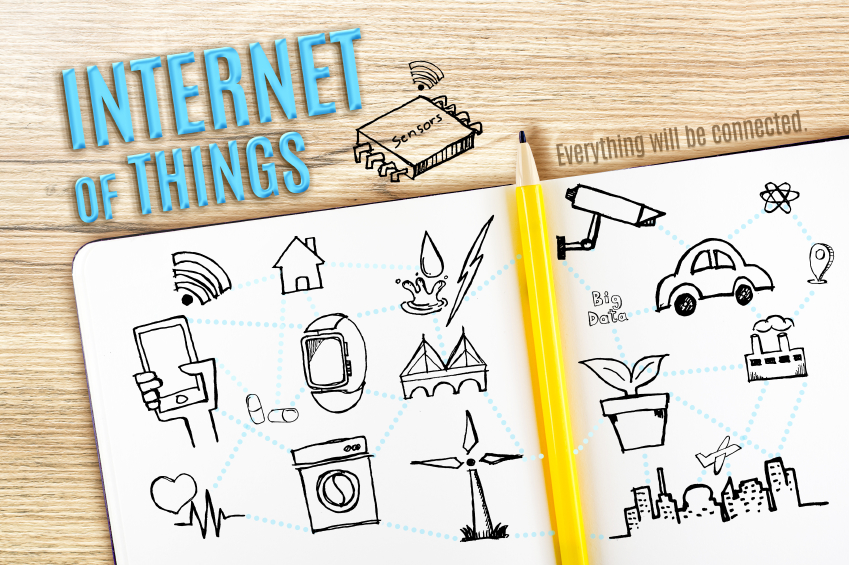The Internet is now an integral part of our daily lives and we would struggle to imagine life without it. However, growth has largely been driven by access to content and speed.
We are now moving into the new phase of growth where the everyday "things" around us will be connected to the Internet. This is the Internet of Things (IoT). It will have a profound impact on our daily lives and change the way we interact with our environment.
The IoT will also have a big impact on way industries operate and relate with their customers. This is particularly true for insurance companies where there is an opportunity to move from being passive and reacting to losses to helping prevent them.
In short, the IoT will be a game changer for insurers.
The smart home is already going mainstream. Big-box stores such as Lowe's, Home Depot, Best Buy, Target and Sears have started to offer their own do-it-yourself smart-home products. They are competing with the major service providers such as AT&T, Comcast, Time Warner Cable and others who have developed their own consumer offerings. The entry of Apple, Google and Microsoft into the segment with different consumer strategies is a clear sign that the market has arrived.
Many of these new entrants have recognized that data will be key to their success in a connected world where devices will generate as much as we can handle, and the ability to refine and exploit it will decide the winners and losers in many industries.
This data is going to be particularly important to insurers who have traditionally based their pricing on risk assessment. So, if a competitor has better data on which to base their judgements, they will have the edge.
The IoT and access to data will reshape industry boundaries and create new opportunities. The IoT will allow insurance companies to move from the traditional passive role of underwriting risk to take a more active position by supplying smart-home products and services.
Other industries have already adopted this type of strategy. For example, the major cable and telecommunication companies now offer smart-home products on top of their broadband services. These provide new revenue streams, leverage their core competencies, increase customer loyalty and provide a platform for growing new value-added services.
Insurance companies could take a page out of the service providers' playbook and offer their own solutions to realize similar benefits.
Continue reading …

(Photo: iStock)
Opportunity for insurers
Entering the IoT and smart home would give insurers a more direct relationship with the consumer through daily interaction using touch points in apps and messaging. Insurers could also become more competitive by adopting pricing strategies that include direct sourcing and bundling with policies. Contrast this to consumers' traditional negative experience of bill paying on an annual or semi-annual basis for something they most likely didn't use.
Consumers would see insurance companies as a logical source for products and services that protect people and their property. Smart-home systems can be do-it-yourself offering protection for security, fire and flood. Additionally, they bring new levels of protection with innovation. By partnering with IoT companies, insurers can leverage technologies such as connected water leakage detectors and temperature sensors to continuously monitor customers' homes. These technologies provide homeowners with early warning signs and the ability to act quickly in the case of an adverse event, allowing insurers to better mitigate risks and reduce losses for customers.
If providers are hesitant to step outside of traditional industry boundaries, the alternative is to forge new partnerships with the companies that are deploying smart-home solutions. These companies have access to the data that will help insurance companies manage risk.
For example, Lowe's has partnered with a number of insurance companies to trade data from the Iris smart-home system. Because data privacy is a major issue, customers have to approve sharing. This can be achieved by offering a benefit on the policy, usually in the form of a discount.
Clearly, the IoT market is moving extremely fast and will challenge conventional wisdom. Just five years ago, the only connected device in home improvement retail was a smart door lock, and now there are hundreds — even dog bowls and toothbrush are becoming connected. If the IoT grows as predicted, every powered device will be IP addressable in the next 10 years. Ignoring this market is not a smart move.
While competing in the smart-home market by offering consumers new products and services may seem daunting, the IoT will disrupt traditional industry boundaries, and attack is sometimes the best form of defense. Moreover, actively entering the market has the biggest upside. At a minimum, there is a need to find ways to partner to protect your position and get access to data to remain competitive.
The leading insurance providers will be those who embrace the IoT and its impact.
Opinions expressed in this article are the author's own.
Want to continue reading?
Become a Free PropertyCasualty360 Digital Reader
Your access to unlimited PropertyCasualty360 content isn’t changing.
Once you are an ALM digital member, you’ll receive:
- Breaking insurance news and analysis, on-site and via our newsletters and custom alerts
- Weekly Insurance Speak podcast featuring exclusive interviews with industry leaders
- Educational webcasts, white papers, and ebooks from industry thought leaders
- Critical converage of the employee benefits and financial advisory markets on our other ALM sites, BenefitsPRO and ThinkAdvisor
Already have an account? Sign In Now
© 2025 ALM Global, LLC, All Rights Reserved. Request academic re-use from www.copyright.com. All other uses, submit a request to [email protected]. For more information visit Asset & Logo Licensing.








